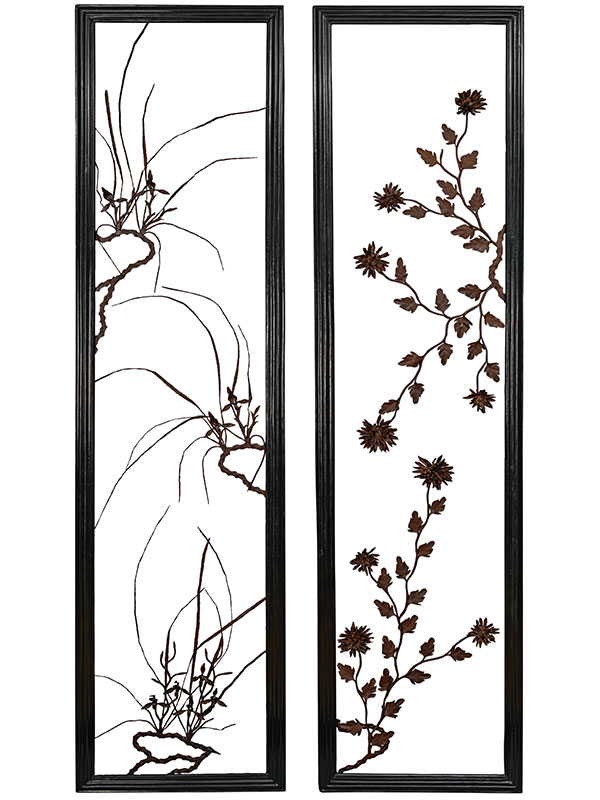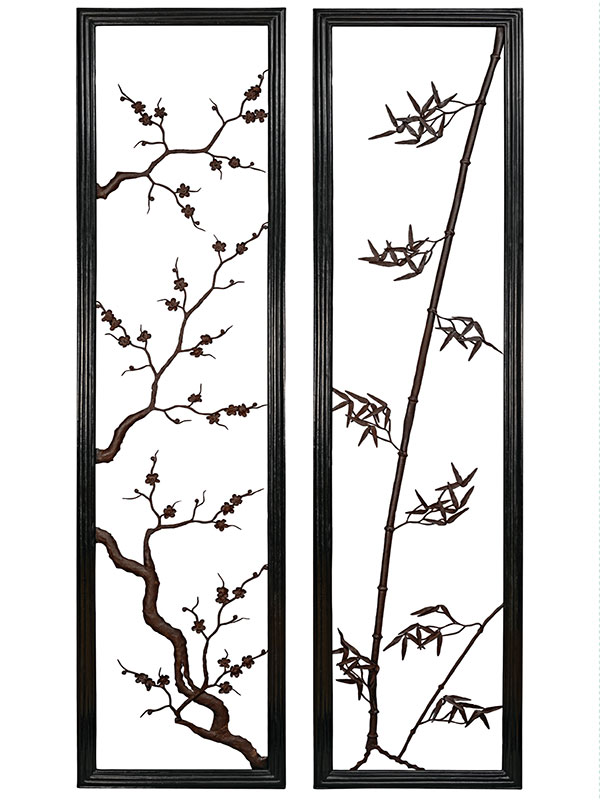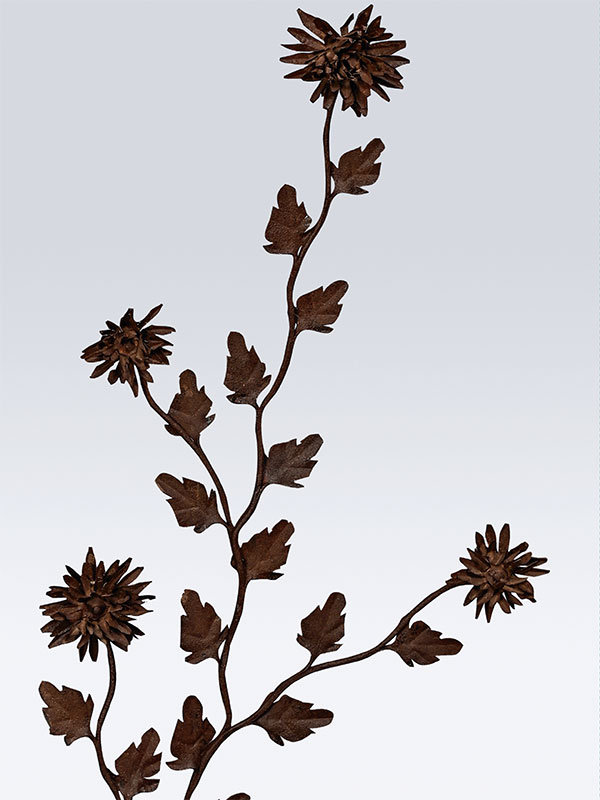Set of four iron "paintings", tiehua
China, 19th century
A set of unusually large iron paintings, comprising four panels, depicting respectively three branches of flowering prunus, a strand of bamboo, three branches of orchid and two branches of chrysanthemum flowers. The plants are all made of wrought iron elements, which are crafted individually and jointed together with bolts. Each painting is contained within a fluted, dark hardwood frame.
This set of four panels is an excellent example of iron imitating ink painting. The birth of tiehua is attributed to a Wuhu blacksmith, Tang Peng (also known as Tang Tien-chi, 1644-1722), who was inspired by Chinese ink paintings depicting landscapes by the painter Xiao Yun-Cong (1596-1673) who vied to recreate these paintings in iron. A set of 18th century iron paintings representing the seasons, one of which is illustrated by Jenyns, is in the collection of the British Museum.[1] A set of iron paintings from the Shanghai Museum, dated to the 17th century, including one with comparable prunus branches, was included in the exhibition The Chinese Scholar’s Studio: Artistic life in the Late Ming Period at the Asia Society Galleries in New York in 1987.[2]
Provenance: The Collection of John Goodfreund, New York.
- Jenyns, R.S. and Watson, W., Chinese Art, vol. II. Phaidon, Oxford, 1980, p.104
- Li. C.T. and Watt, James C.Y. eds, The Chinese Scholar’s Studio: Artistic Life in the Late Ming Period – An Exhibition from the Shanghai Museum, Thames and Hudson, New York, 1987, pp. 120-121, no. 68




